实例介绍
【实例截图】
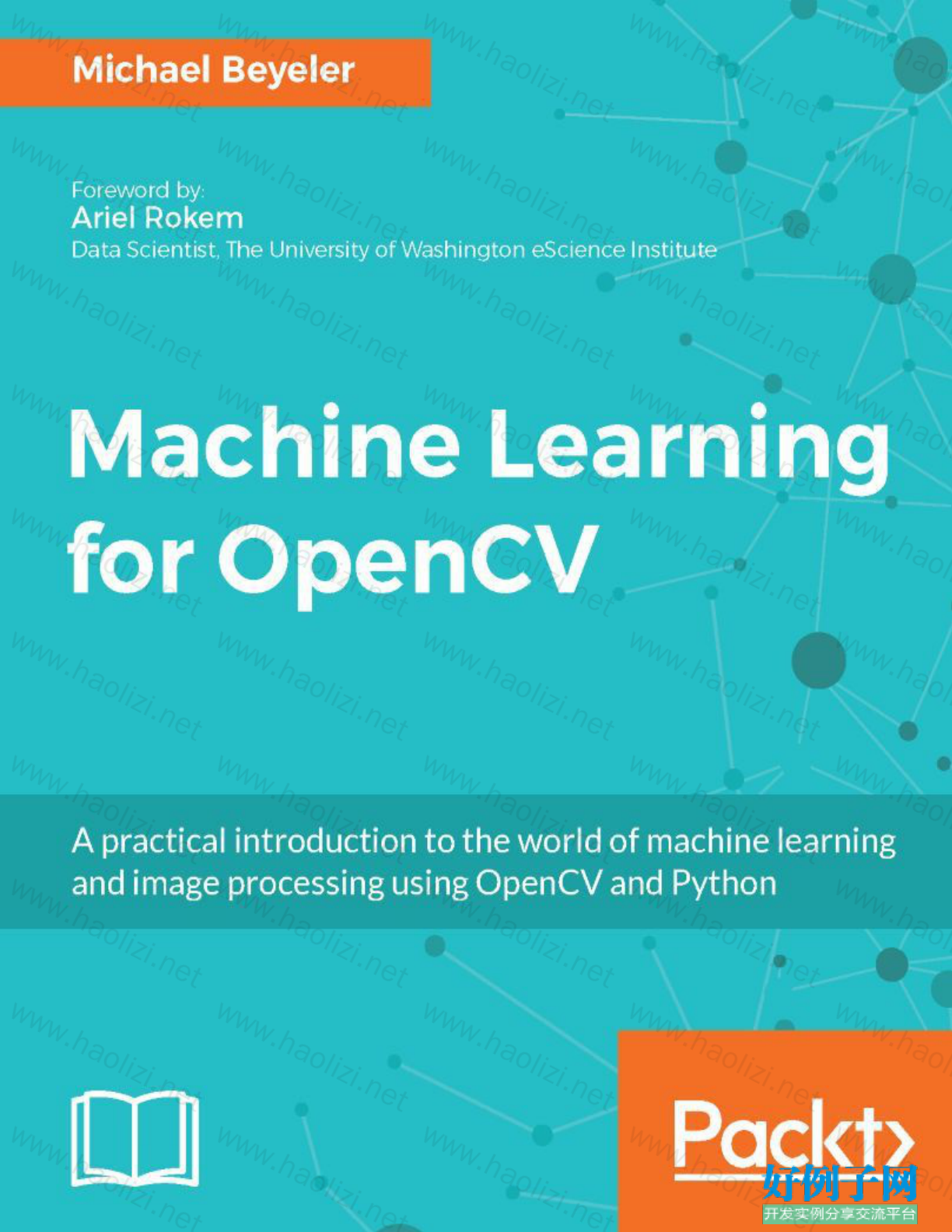


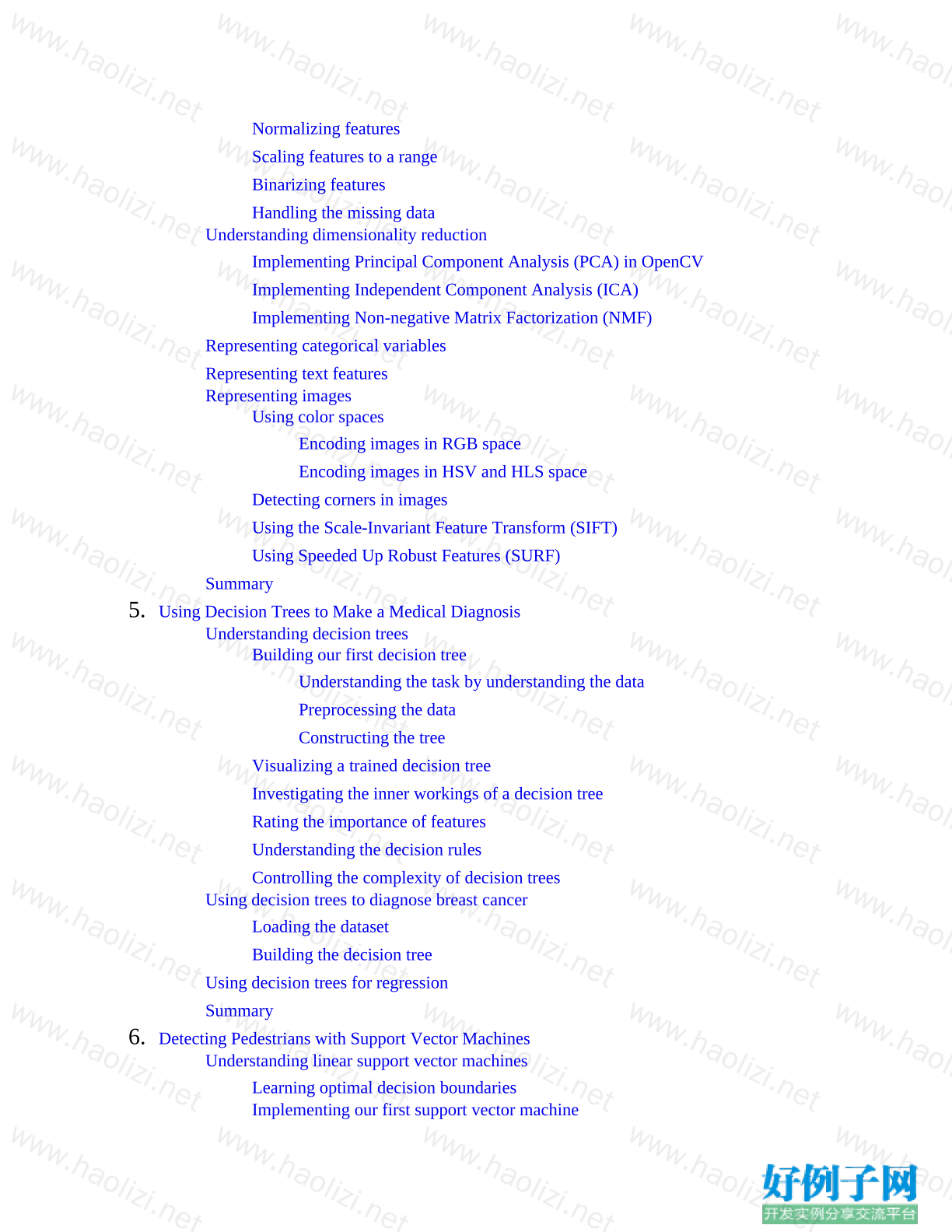
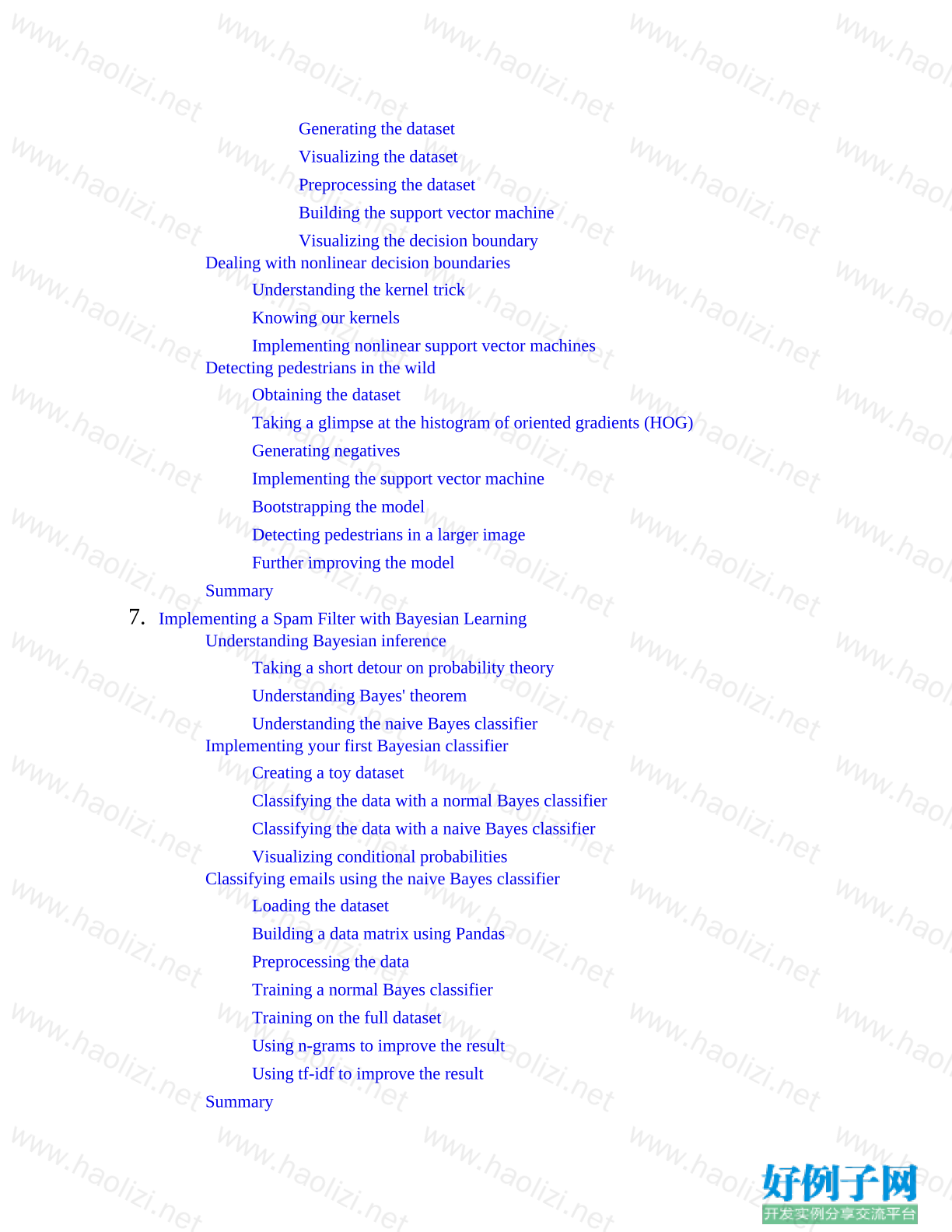

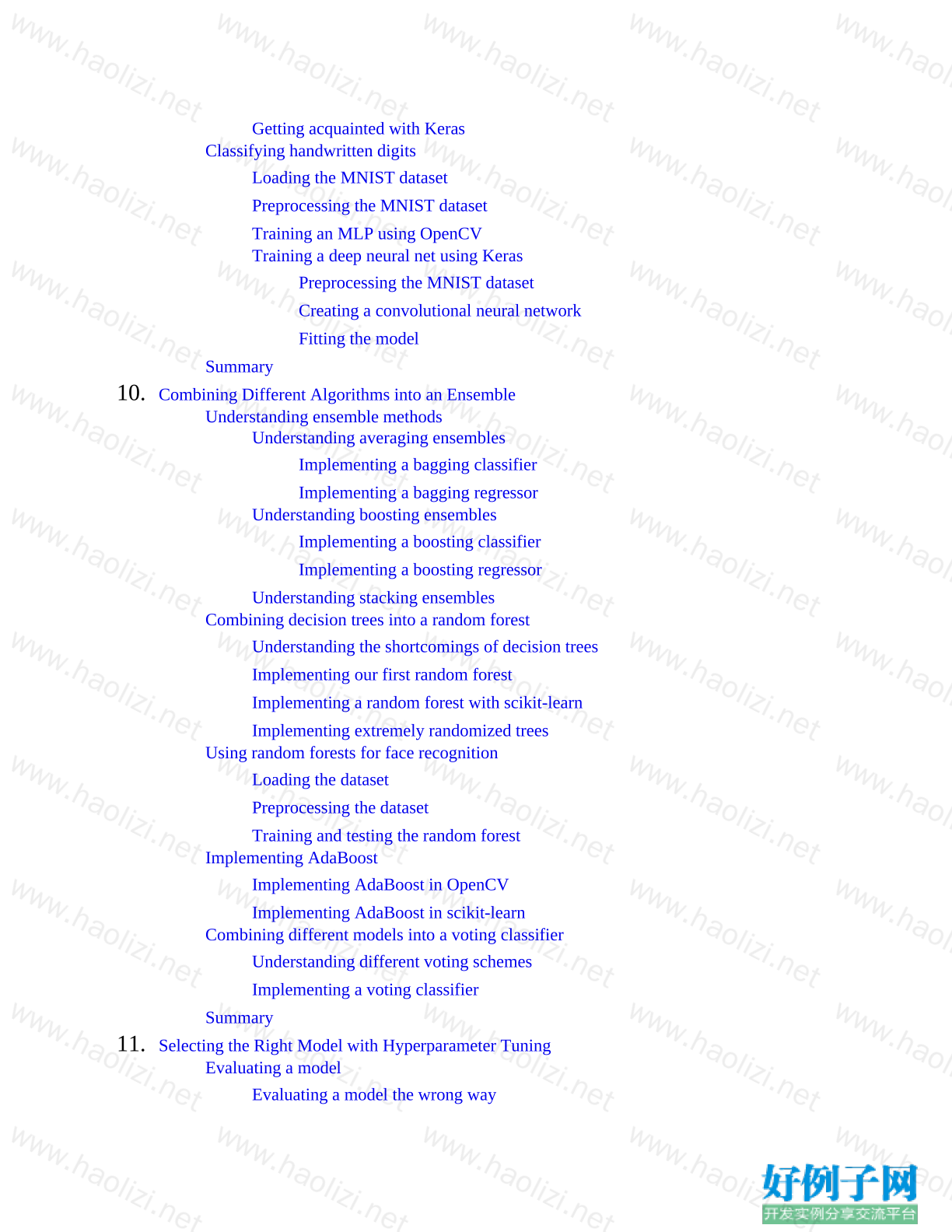
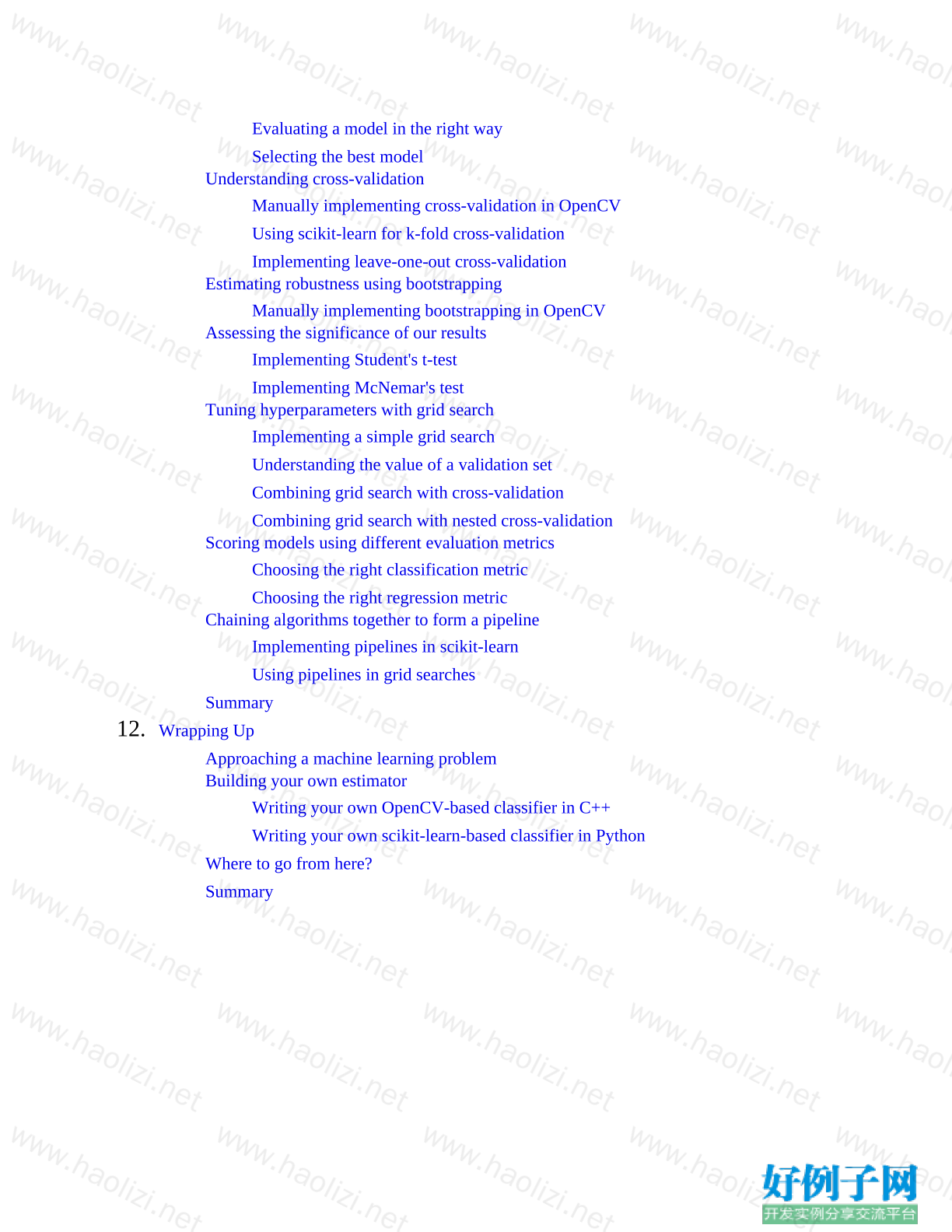
【核心代码】
Table of Contents
Preface
What this book covers
What you need for this book
Who this book is for
Conventions
Reader feedback
Customer support
Downloading the example code
Errata
Piracy
Questions
1. A Taste of Machine Learning
Getting started with machine learning
Problems that machine learning can solve
Getting started with Python
Getting started with OpenCV
Installation
Getting the latest code for this book
Getting to grips with Python's Anaconda distribution
Installing OpenCV in a conda environment
Verifying the installation
Getting a glimpse of OpenCV's ML module
Summary
2. Working with Data in OpenCV and Python
Understanding the machine learning workflow
Dealing with data using OpenCV and Python
Starting a new IPython or Jupyter session
Dealing with data using Python's NumPy package
Importing NumPy
Understanding NumPy arrays
Accessing single array elements by indexing
Creating multidimensional arrays
Loading external datasets in Python
Visualizing the data using Matplotlib
Importing Matplotlib
Producing a simple plot
Visualizing data from an external dataset
Dealing with data using OpenCV's TrainData container in C
Summary
3. First Steps in Supervised Learning
Understanding supervised learning
Having a look at supervised learning in OpenCV
Measuring model performance with scoring functions
Scoring classifiers using accuracy, precision, and recall
Scoring regressors using mean squared error, explained variance, and R squa
red
Using classification models to predict class labels
Understanding the k-NN algorithm
Implementing k-NN in OpenCV
Generating the training data
Training the classifier
Predicting the label of a new data point
Using regression models to predict continuous outcomes
Understanding linear regression
Using linear regression to predict Boston housing prices
Loading the dataset
Training the model
Testing the model
Applying Lasso and ridge regression
Classifying iris species using logistic regression
Understanding logistic regression
Loading the training data
Making it a binary classification problem
Inspecting the data
Splitting the data into training and test sets
Training the classifier
Testing the classifier
Summary
4. Representing Data and Engineering Features
Understanding feature engineering
Preprocessing data
Standardizing features
Normalizing features
Scaling features to a range
Binarizing features
Handling the missing data
Understanding dimensionality reduction
Implementing Principal Component Analysis (PCA) in OpenCV
Implementing Independent Component Analysis (ICA)
Implementing Non-negative Matrix Factorization (NMF)
Representing categorical variables
Representing text features
Representing images
Using color spaces
Encoding images in RGB space
Encoding images in HSV and HLS space
Detecting corners in images
Using the Scale-Invariant Feature Transform (SIFT)
Using Speeded Up Robust Features (SURF)
Summary
5. Using Decision Trees to Make a Medical Diagnosis
Understanding decision trees
Building our first decision tree
Understanding the task by understanding the data
Preprocessing the data
Constructing the tree
Visualizing a trained decision tree
Investigating the inner workings of a decision tree
Rating the importance of features
Understanding the decision rules
Controlling the complexity of decision trees
Using decision trees to diagnose breast cancer
Loading the dataset
Building the decision tree
Using decision trees for regression
Summary
6. Detecting Pedestrians with Support Vector Machines
Understanding linear support vector machines
Learning optimal decision boundaries
Implementing our first support vector machine
Generating the dataset
Visualizing the dataset
Preprocessing the dataset
Building the support vector machine
Visualizing the decision boundary
Dealing with nonlinear decision boundaries
Understanding the kernel trick
Knowing our kernels
Implementing nonlinear support vector machines
Detecting pedestrians in the wild
Obtaining the dataset
Taking a glimpse at the histogram of oriented gradients (HOG)
Generating negatives
Implementing the support vector machine
Bootstrapping the model
Detecting pedestrians in a larger image
Further improving the model
Summary
7. Implementing a Spam Filter with Bayesian Learning
Understanding Bayesian inference
Taking a short detour on probability theory
Understanding Bayes' theorem
Understanding the naive Bayes classifier
Implementing your first Bayesian classifier
Creating a toy dataset
Classifying the data with a normal Bayes classifier
Classifying the data with a naive Bayes classifier
Visualizing conditional probabilities
Classifying emails using the naive Bayes classifier
Loading the dataset
Building a data matrix using Pandas
Preprocessing the data
Training a normal Bayes classifier
Training on the full dataset
Using n-grams to improve the result
Using tf-idf to improve the result
Summary
8. Discovering Hidden Structures with Unsupervised Learning
Understanding unsupervised learning
Understanding k-means clustering
Implementing our first k-means example
Understanding expectation-maximization
Implementing our own expectation-maximization solution
Knowing the limitations of expectation-maximization
First caveat: No guarantee of finding the global optimum
Second caveat: We must select the number of clusters beforehand
Third caveat: Cluster boundaries are linear
Fourth caveat: k-means is slow for a large number of samples
Compressing color spaces using k-means
Visualizing the true-color palette
Reducing the color palette using k-means
Classifying handwritten digits using k-means
Loading the dataset
Running k-means
Organizing clusters as a hierarchical tree
Understanding hierarchical clustering
Implementing agglomerative hierarchical clustering
Summary
9. Using Deep Learning to Classify Handwritten Digits
Understanding the McCulloch-Pitts neuron
Understanding the perceptron
Implementing your first perceptron
Generating a toy dataset
Fitting the perceptron to data
Evaluating the perceptron classifier
Applying the perceptron to data that is not linearly separable
Understanding multilayer perceptrons
Understanding gradient descent
Training multi-layer perceptrons with backpropagation
Implementing a multilayer perceptron in OpenCV
Preprocessing the data
Creating an MLP classifier in OpenCV
Customizing the MLP classifier
Training and testing the MLP classifier
Getting acquainted with deep learning
Getting acquainted with Keras
Classifying handwritten digits
Loading the MNIST dataset
Preprocessing the MNIST dataset
Training an MLP using OpenCV
Training a deep neural net using Keras
Preprocessing the MNIST dataset
Creating a convolutional neural network
Fitting the model
Summary
10. Combining Different Algorithms into an Ensemble
Understanding ensemble methods
Understanding averaging ensembles
Implementing a bagging classifier
Implementing a bagging regressor
Understanding boosting ensembles
Implementing a boosting classifier
Implementing a boosting regressor
Understanding stacking ensembles
Combining decision trees into a random forest
Understanding the shortcomings of decision trees
Implementing our first random forest
Implementing a random forest with scikit-learn
Implementing extremely randomized trees
Using random forests for face recognition
Loading the dataset
Preprocessing the dataset
Training and testing the random forest
Implementing AdaBoost
Implementing AdaBoost in OpenCV
Implementing AdaBoost in scikit-learn
Combining different models into a voting classifier
Understanding different voting schemes
Implementing a voting classifier
Summary
11. Selecting the Right Model with Hyperparameter Tuning
Evaluating a model
Evaluating a model the wrong way
Evaluating a model in the right way
Selecting the best model
Understanding cross-validation
Manually implementing cross-validation in OpenCV
Using scikit-learn for k-fold cross-validation
Implementing leave-one-out cross-validation
Estimating robustness using bootstrapping
Manually implementing bootstrapping in OpenCV
Assessing the significance of our results
Implementing Student's t-test
Implementing McNemar's test
Tuning hyperparameters with grid search
Implementing a simple grid search
Understanding the value of a validation set
Combining grid search with cross-validation
Combining grid search with nested cross-validation
Scoring models using different evaluation metrics
Choosing the right classification metric
Choosing the right regression metric
Chaining algorithms together to form a pipeline
Implementing pipelines in scikit-learn
Using pipelines in grid searches
Summary
12. Wrapping Up
Approaching a machine learning problem
Building your own estimator
Writing your own OpenCV-based classifier in C
Writing your own scikit-learn-based classifier in Python
Where to go from here?
Summary
小贴士
感谢您为本站写下的评论,您的评论对其它用户来说具有重要的参考价值,所以请认真填写。
- 类似“顶”、“沙发”之类没有营养的文字,对勤劳贡献的楼主来说是令人沮丧的反馈信息。
- 相信您也不想看到一排文字/表情墙,所以请不要反馈意义不大的重复字符,也请尽量不要纯表情的回复。
- 提问之前请再仔细看一遍楼主的说明,或许是您遗漏了。
- 请勿到处挖坑绊人、招贴广告。既占空间让人厌烦,又没人会搭理,于人于己都无利。
关于好例子网
本站旨在为广大IT学习爱好者提供一个非营利性互相学习交流分享平台。本站所有资源都可以被免费获取学习研究。本站资源来自网友分享,对搜索内容的合法性不具有预见性、识别性、控制性,仅供学习研究,请务必在下载后24小时内给予删除,不得用于其他任何用途,否则后果自负。基于互联网的特殊性,平台无法对用户传输的作品、信息、内容的权属或合法性、安全性、合规性、真实性、科学性、完整权、有效性等进行实质审查;无论平台是否已进行审查,用户均应自行承担因其传输的作品、信息、内容而可能或已经产生的侵权或权属纠纷等法律责任。本站所有资源不代表本站的观点或立场,基于网友分享,根据中国法律《信息网络传播权保护条例》第二十二与二十三条之规定,若资源存在侵权或相关问题请联系本站客服人员,点此联系我们。关于更多版权及免责申明参见 版权及免责申明



网友评论
我要评论